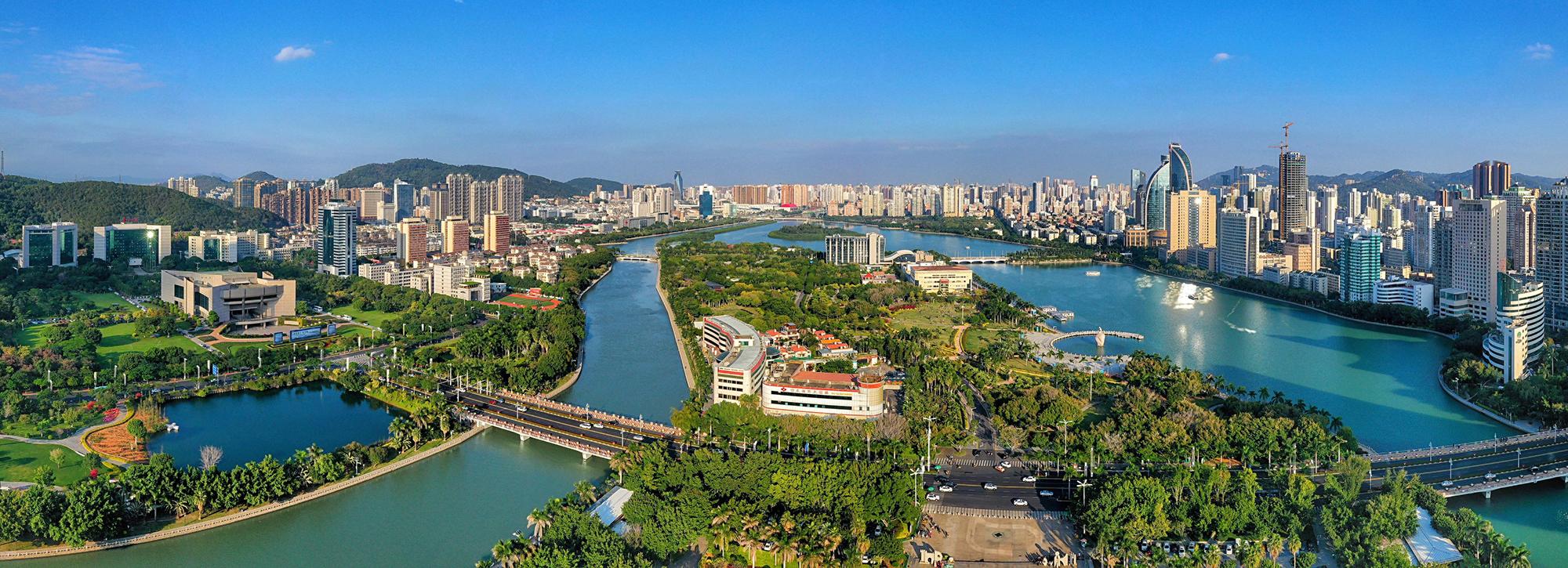
Sponge cities get the blue-green light
From the UK to China, Bridget-Woods Ballard explains how we are supporting the introduction of blue-green infrastructure for the benefit of society and the environment.
Around the world, cities are giving the blue-green light to the use of sustainable approaches to storm water management, moving away from traditional underground pipe and storage networks. Blue-green infrastructure includes sustainable drainage, sponge cities, water sensitive urban design and low impact development. The benefits are manifold: managing flood risk, mitigating the environmental impact of new development, creating and restoring essential high-value natural and social capital, and climate-proofing future liveability.
Why blue-green development?
In our work as drainage engineers, we urgently need to recognise the rising importance of water as a resource and to work with rainfall and runoff to maximise the value of our solutions. Blue-green systems focus on:
- capturing and harvesting rainfall, an increasingly vital tool for water scarce environments
- encouraging the infiltration and evapotranspiration of a large proportion of annual rainfall to support natural catchment hydrology
- slowing and storing flows to prevent exacerbation of downstream flood risks and to minimise morphological and ecological damage
- naturally filtering and cleansing water before release.
As our climate patterns shift, urban densification and expansion together with increasing rainfall intensities mean surface water flood risk is escalating – and replacing subsurface pipework is not often an affordable economic option. By reducing volumes and rates of runoff into sewers, the frequency of combined sewer overflows can be significantly reduced and sewer capacity and headroom protected for future generations. But the benefits of sponge cities extend far further than the purely hydrological. Increasing urban green and blue space helps to create new habitats and habitat connectivity (delivering Biodiversity Net Gain), offset rising temperatures and improve roadside air quality. Furthermore, the social benefits of green and blue amenity spaces in our cities are well known – promoting strong communities and individual health and wellbeing.
China’s sponge cities
Our drainage engineers in China are involved in modelling, design and research on ‘sponge cities’, which are the blue-print for new development across the country. Flood prevention rocketed up the Chinese state agenda after disastrous large-scale flooding in Beijing in 2012 and improved environmental management has also become a key objective in protecting the viability of future economic development in the country. The sponge city initiative was launched in 2015 with 16 pilot sponge cities signing up to ensuring that 20 per cent of their urban land includes ‘sponge’ features by 2020. The nationwide programme has been expanded to cover 30 cities which must deliver 80 per cent ‘sponge’ coverage by 2030.
We are reviewing the design rationale and practicability of sponge city plans in China using Innovyze software (Infoworks ICM). For example, in Shijiazhuang City, our models are being used to:
- review the effectiveness of the designed ‘annual runoff control rate’ in terms of protecting the local hydrological cycle
- evaluate the impacts of design standards on development planning
- clarify how the sponge city scheme improves water quality
- verify the effect of proposals on drainage and flood mitigation
- review the drainage capacity of interlinking networks.
We have undertaken cutting-edge research for Xiamen – one of the first 16 sponge pilot cities in China. Having already completed a number a pilot projects, Xiamen had identified a key issue to be the dependence of system performance on model predictions. The complexity of SuDS components compared to traditional pipe systems (for example, inclusion of vegetation, filter media, soils) means modellers are dealing with a much larger suite of parameters. HR Wallingford therefore conducted global sensitivity analysis using the Morris method for ICM SuDS modelling, focusing on parameters applicable to Xiamen. The project tested four different types of SuDS components: a bioretention cell, a permeable pavement, a green roof, and a vegetated swale. Components were characterised by a set of input parameters specifying the vertical component layers and the horizontal setup, and tested under design rainfall intensities.
The research generated an understanding of sensitivity of each output to the assumed input parameters, enabling designers to focus site testing resources on those that were most influential.
Our blue-green portfolio
HR Wallingford are experts in using natural systems to manage flood risk. In the UK, we are supporting the industry in moving towards more sustainable approaches to drainage – drafting guidance, undertaking research, promoting free design tools (like UK SuDS) and delivering regular training courses.
Our studies undertaken in both in the UK and Ecuador (Quito) have shown the extent to which green infrastructure solutions can be retrofitted within the urban fabric to relieve capacity on receiving sewers. As part of this research, we optimised risk reduction strategies by identifying areas with high associated hydraulic loads (‘hazard mapping’) in combination with ‘risk mapping’ of surcharge points and ‘opportunity mapping’ of areas with potential for retrofit surface water infiltration and storage.
As cities worldwide grapple to deal with effects of a changing climate, blue green systems can only become more important. Sponge city modelling is relatively new and there are many lessons to be learned and shared. However, as green infrastructure becomes the norm for surface water management, our expertise and understanding will be fundamental in helping cities worldwide deliver valuable, functional and resilient urban environments.
Want to know more?
